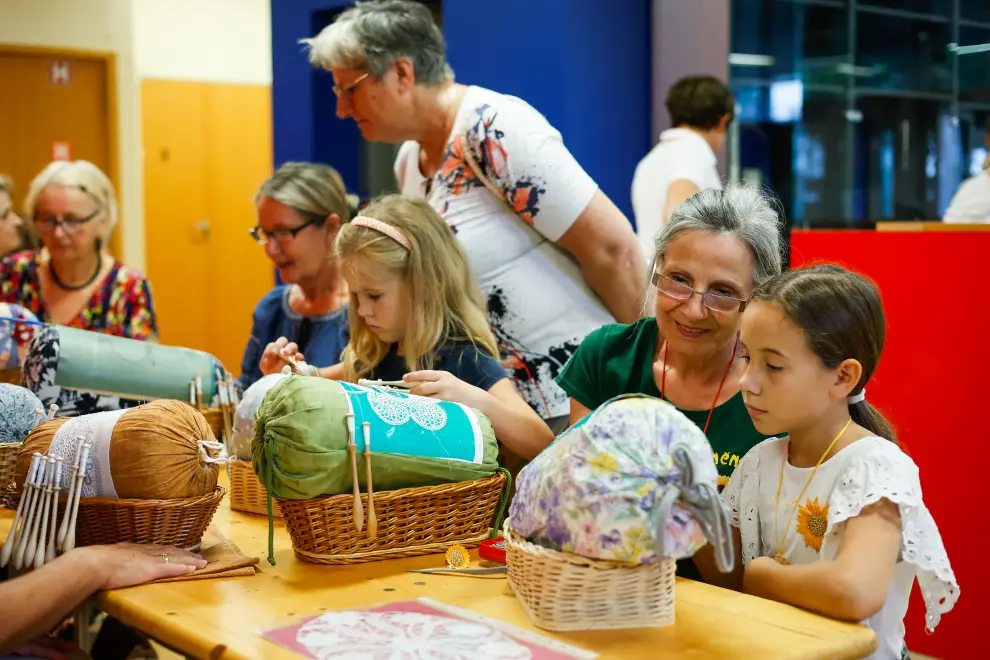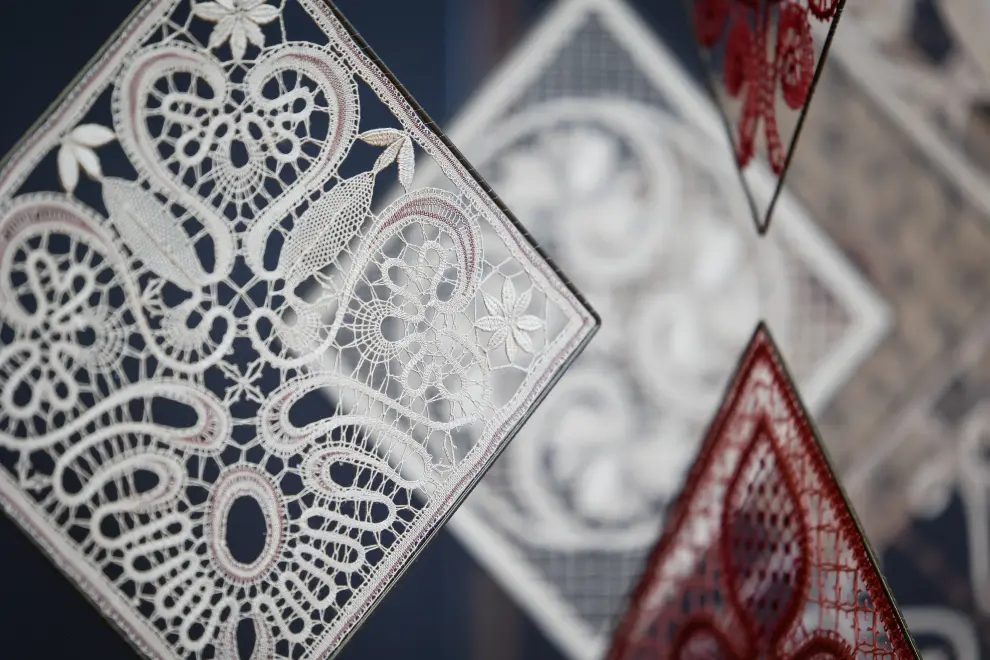In Slovenia, lace-making is for everyone
The western town of Nova Gorica hosted bobbin and needle lace-makers from 26 countries for the World Lace Congress over the past weekend. This is the second time that Slovenia, a country with a long tradition of the craft, hosted this largest global event celebrating lace.
Featuring workshops, lectures, exhibitions and competitions, the congress is held every two years along with the general assembly of the International Bobbin and Needle Lace Organisation (OIDFA).
After the original host city Hamburg withdrew, Slovenia was chosen to host not only because of its long-standing tradition of lace-making but also because of the large number of lace-makers.
The craft is not done only by women, but also by men and children, which further distinguishes Slovenia from other countries.
With not much time to spare, the organisers were able to prepare the event, pulling experience from when the festival was held in Ljubljana in 2016.
"Lace-makers come to events like this for company, said Vida Humar, a member of the Idrija bobbin lace school who organised the street bobbin lace making event at the festival. "Bobbin lace is normally created at home, behind closed doors, not at a stadium," she added.
Because of bad weather the street lace-making had to be moved indoors. While most attendees were older women, young girls took part as well.

Children watched over by their elders as they make lace. Photo: STA
"We, grandmothers and aunts, teach the bobbin lace-making to the younger generation, especially here in Nova Gorica where the practice is not as developed. We want to maintain this tradition," said Humar.
"In the sixties and seventies this was the work of old 'nonnas', as mothers had to work in factories and put away their lace pillows at least until retirement. But now the craft is developing again," said Humar.
The craft started in Slovenia in mining towns in the 17th century. Long winter evenings were spent making bobbin lace, which was then sold cheaply to merchants abroad, who in turn supplied thread.
Many started to resent bobbin lace and put away their lace pillows and bobbins as soon as living conditions improved, said Humar.
The situation is different today, but there is now less time for lace-making. Most lace-makers are older women who pick up the bobbins when they retire, said Nevenka Malnič. She first learned the craft after she retired and then "infected" her grand-daughter as well.
Today there are more than 100 bobbin lace associations around the country. The craft is also featured on the UNESCO's intangible heritage list.
Slovenian lace is well-known and recognised abroad, not only the Idrija bobbin lace but also lace from Železniki, Žiri and other towns, said Tatjana Mizori Zupan, one of the organisers of the congress. Exhibitions are held at every congress, showcasing the best lace artworks from different countries, she added.

Slovenian lace is well-kown abroad. Photo: STA
One exhibition is dedicated to presentations of members of the OIDFA through lace. This year the Finnish presentation in the form of a colourful birch tree was chosen as the best among the 21 presentations.
Another staple of the congress is the lace-making competition for individuals, groups and young lace-makers. This year's theme was Red threads.
Workshops and lectures at the congress focused on topics such as the origin of the most typical lace stitches from Gorizia, the lace school of Izola (1881-1936), the making of bobbin lace in Slovenia and experimental lace.
The congress hosted 157 attendees from 26 countries. The exhibition stands featured 22 bobbing and needle lace schools, associations and groups from France, Italy, Slovenia and Spain.
The Nova Gorica post celebrated the event by creating special postmarks featuring lace, which were used to stamp mail during the congress.


